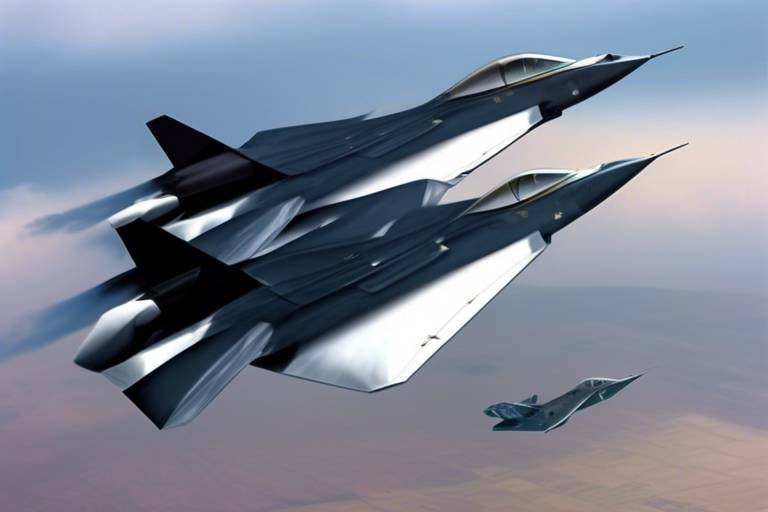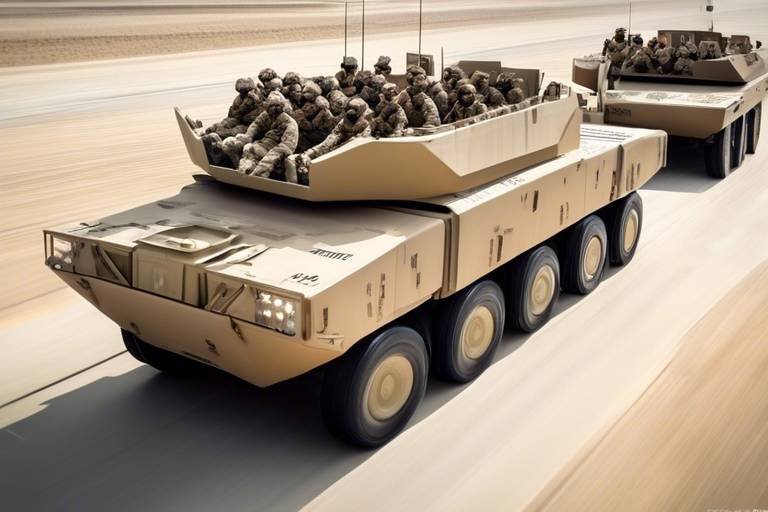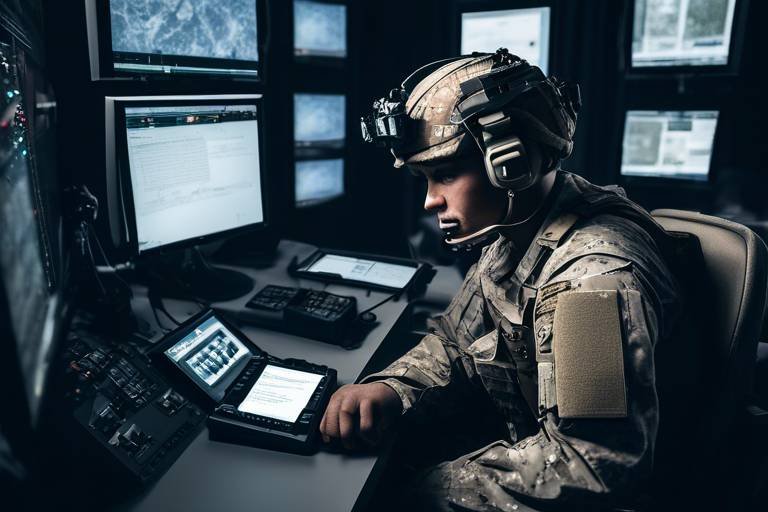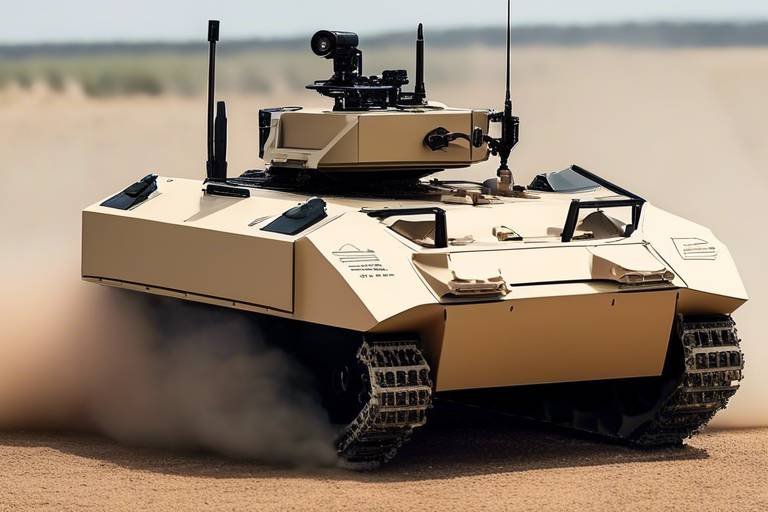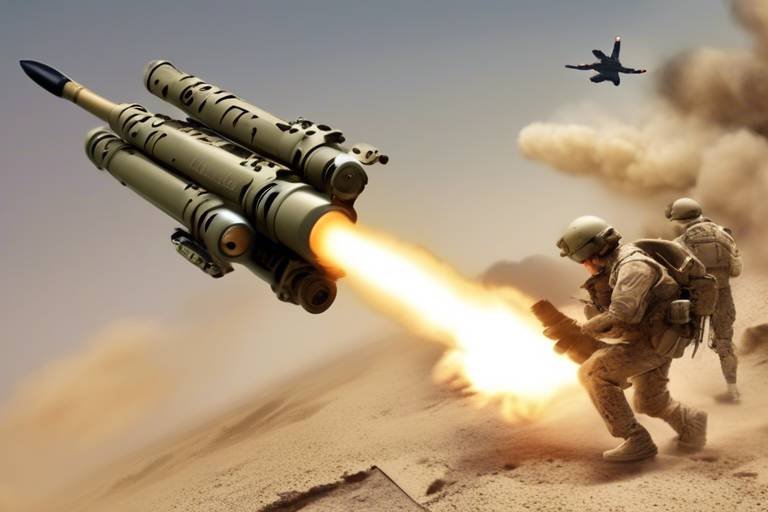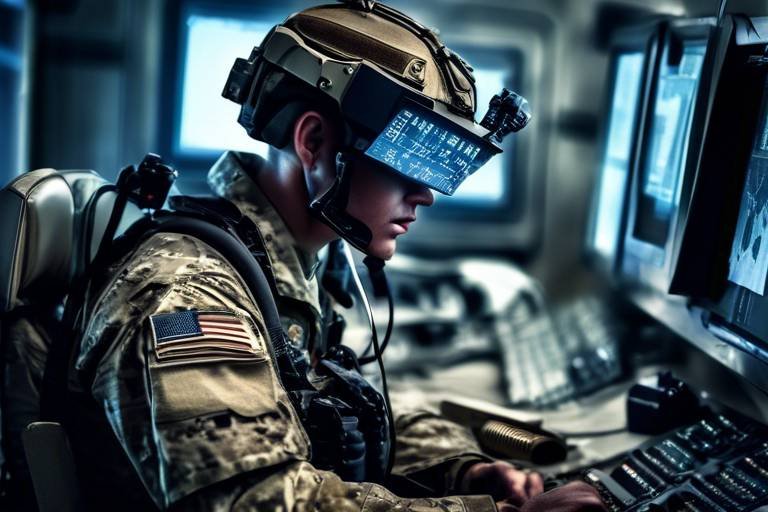AI and the Future of Autonomous Border Defense
In today's rapidly evolving technological landscape, artificial intelligence (AI) is not just a buzzword; it's a game-changer, especially in the realm of border security. Imagine a world where borders are monitored not just by human agents but by intelligent systems that can analyze data, detect threats, and respond in real-time. This is not science fiction; it’s happening now. As nations grapple with the complexities of securing their borders, AI is stepping in to revolutionize how we approach border defense.
The integration of AI into border security is akin to upgrading from a flip phone to a smartphone. It enhances our capabilities, making us more efficient and effective in managing the challenges that come with national security. Think about it: with AI, we can automate tedious processes, analyze vast amounts of data in seconds, and enhance our surveillance capabilities to detect potential threats before they escalate. This transformation is not just about technology; it’s about redefining how we think about safety and security in an interconnected world.
As we delve deeper into the implications of AI on border defense, we’ll explore various aspects, including the role of autonomous surveillance systems, the challenges posed by drone technology, and the ethical considerations that arise from deploying such advanced tools. The future of autonomous border defense is not just about embracing new technology; it’s about ensuring that these advancements are used responsibly and ethically.
With AI at the helm, we can expect a future where borders are not just lines on a map, but dynamic zones of safety, monitored by intelligent systems that adapt and respond to threats in real-time. This article will unpack how these innovations are reshaping the landscape of border security and what it means for nations around the globe. So, buckle up as we embark on this journey into the future of autonomous border defense!
- What is AI's role in border security? AI automates processes, analyzes data, and enhances surveillance capabilities to detect threats effectively.
- How do autonomous surveillance systems work? They use AI technologies like drones and cameras to monitor borders in real-time.
- What are the ethical concerns regarding AI in border defense? Privacy, accountability, and potential bias in AI systems are significant concerns that need addressing.
- Can drones operate in adverse weather conditions? Yes, drones are designed to function in various weather conditions, making them versatile tools for border patrol.
- How can bias in AI systems be addressed? Ongoing evaluation and adjustment of AI systems are necessary to ensure fairness and accuracy in border security applications.

The Role of AI in Border Security
Artificial intelligence is revolutionizing the way we approach border security. Imagine a world where threats are detected before they even reach the border, where surveillance is not just reactive but proactive. This is not science fiction; it's the reality we are moving towards thanks to AI. By automating processes and enhancing data analysis, AI is transforming traditional border security measures into sophisticated systems that can adapt to emerging challenges.
One of the most significant contributions of AI in this field is its ability to analyze vast amounts of data quickly and accurately. Think about the sheer volume of information generated daily at borders, from vehicle registrations to biometric data. AI algorithms can sift through this data, identifying patterns and anomalies that might indicate potential threats. This capability allows border security agencies to focus their resources where they are needed most, rather than wasting time on false alarms.
Moreover, AI enhances surveillance capabilities through advanced technologies such as facial recognition and behavior analysis. For instance, AI systems can monitor individuals crossing the border and analyze their actions in real-time. If someone exhibits suspicious behavior, the system can alert border patrol agents instantly, enabling them to respond swiftly. This level of surveillance not only increases safety but also acts as a deterrent for potential violators.
Additionally, AI supports the integration of various surveillance tools, creating a comprehensive security network. Consider the following key components that AI brings to border security:
- Automated License Plate Recognition (ALPR): This technology can instantly identify vehicles of interest, speeding up the identification process.
- Predictive Analytics: AI can forecast potential illegal crossings based on historical data, allowing for better resource allocation.
- Real-time Monitoring: AI systems can provide continuous surveillance, ensuring that no suspicious activity goes unnoticed.
As we delve deeper into the role of AI in border security, it becomes evident that this technology is not just an enhancement; it’s a necessity. The complexities of modern border management demand innovative solutions that can evolve with emerging threats. However, while AI offers remarkable benefits, it also raises questions about privacy and ethical considerations, which we must address to ensure that these technologies are used responsibly.
In summary, the integration of AI into border security is a game changer. It allows agencies to operate more efficiently, respond more quickly, and ultimately, keep borders secure in ways that were previously unimaginable. As we continue to harness the power of AI, it’s crucial to maintain a balance between security and ethical standards, ensuring that our pursuit of safety does not infringe upon individual rights.
- How does AI improve border security?
AI enhances border security by automating data analysis, improving surveillance capabilities, and enabling real-time threat detection. - What are some technologies used in AI border security?
Technologies include automated license plate recognition, facial recognition, and predictive analytics. - Are there privacy concerns with AI in border security?
Yes, the use of AI surveillance raises significant privacy concerns, necessitating transparent policies and safeguards. - How can bias be addressed in AI systems?
Ongoing evaluation and adjustment of AI training data are essential to ensure fairness and accuracy in border security applications.

Autonomous Surveillance Systems
In today's fast-paced world, the need for efficient and effective border security has never been more critical. are stepping up to the plate, revolutionizing how we monitor and secure our national borders. These systems leverage cutting-edge technologies, such as drones, cameras, and advanced sensors, to provide real-time surveillance and situational awareness. Imagine having a watchful eye that never blinks, tirelessly scanning vast stretches of land for any signs of unauthorized activity. That's the power of AI-driven surveillance!
One of the most exciting aspects of autonomous surveillance systems is their ability to operate without constant human intervention. By utilizing artificial intelligence, these systems can analyze data and detect anomalies much faster than a human could. They can process information from multiple sources, such as satellite imagery and ground sensors, to create a comprehensive picture of border activity. This means that border security agencies can respond more quickly to potential threats, enhancing overall safety and efficiency.
For instance, consider a scenario where a drone equipped with AI technology is patrolling a remote border area. As it flies over the terrain, it collects data and analyzes it on the fly. If it detects unusual movement or a group of people crossing the border at an unauthorized point, it can instantly alert border patrol agents, providing them with precise coordinates and real-time video feeds. This immediate response capability is a game-changer in the realm of border security.
Moreover, the integration of AI in surveillance systems allows for continuous learning and adaptation. These systems can improve their detection algorithms over time, becoming more adept at distinguishing between normal activity and potential threats. This capability is particularly crucial in areas where human resources are limited, as it ensures that even the most remote borders are monitored effectively.
However, with great power comes great responsibility. The deployment of autonomous surveillance systems raises important questions about privacy and ethical considerations. As these technologies become more prevalent, it's essential to strike a balance between security and the rights of individuals. Transparent policies must be established to govern how data is collected, stored, and used, ensuring that the implementation of these systems does not infringe on personal privacy.
In conclusion, autonomous surveillance systems represent a significant leap forward in border security technology. They offer enhanced monitoring capabilities, real-time data analysis, and the potential for improved safety. As we continue to explore the possibilities of AI in this field, it is crucial to remain vigilant about the ethical implications and ensure that these advancements are used responsibly.
- What are autonomous surveillance systems?
Autonomous surveillance systems are technologies that use artificial intelligence to monitor and analyze border activity without constant human oversight. - How do drones contribute to border security?
Drones equipped with AI can cover large areas quickly, providing real-time data and imagery, which helps border patrol agencies respond promptly to potential threats. - What are the privacy concerns associated with these systems?
The integration of autonomous surveillance raises questions about individual privacy, as monitoring may occur without consent. Transparent policies are needed to safeguard personal rights. - How can bias in AI systems be addressed?
Ongoing evaluation and adjustment of AI algorithms are essential to ensure fairness and accuracy, preventing the perpetuation of biases present in training data.
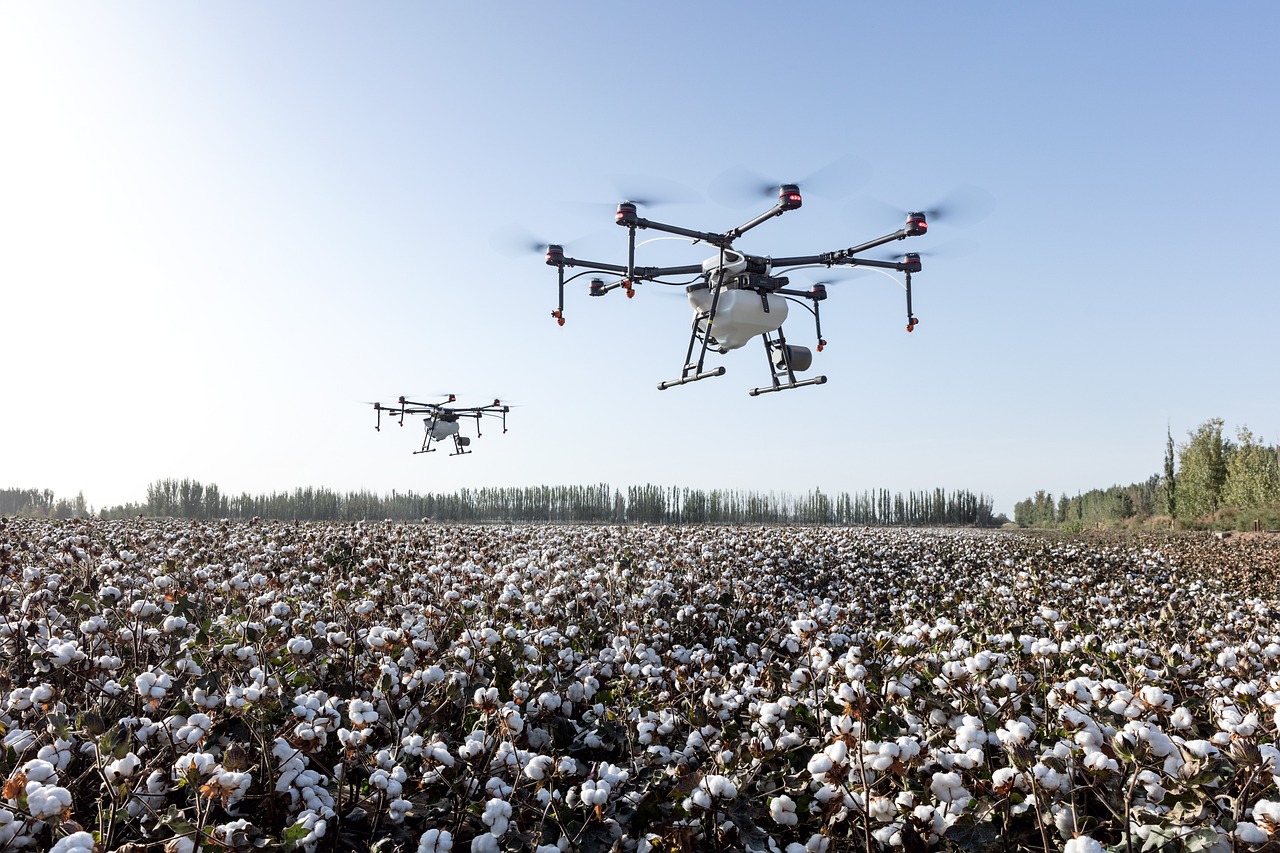
Drone Technology for Border Patrol
In recent years, drone technology has emerged as a game-changer for border patrol operations. Imagine having a bird's-eye view of vast stretches of land, where traditional patrol methods might take hours or even days to cover. Drones, equipped with cutting-edge AI capabilities, are revolutionizing how we monitor and secure national borders. These flying robots can swiftly traverse challenging terrains, providing real-time data that is crucial for effective border management.
One of the most significant advantages of utilizing drones in border patrol is their ability to operate autonomously. With advanced navigation systems and AI algorithms, these drones can be programmed to patrol specific areas without human intervention. This not only saves time but also allows border security personnel to focus on critical tasks, enhancing overall efficiency. For instance, a drone can continuously survey a designated zone, relaying live footage back to command centers, where analysts can assess the situation and respond accordingly.
Moreover, the integration of high-resolution cameras and thermal imaging technology enables drones to capture detailed images and detect heat signatures, making it easier to identify potential threats, such as unauthorized crossings or smuggling activities. In a world where every second counts, having access to such timely intelligence can make a significant difference in preventing illegal activities.
However, the deployment of drone technology is not without its challenges. Regulatory restrictions often limit where and how drones can be operated. For example, certain airspace may be off-limits, and there are strict guidelines regarding privacy and data collection. Addressing these regulations is essential for maximizing the potential of drones in border security. Additionally, public perception plays a vital role; many individuals are concerned about being monitored without consent, which raises important questions about privacy and civil liberties.
Despite these challenges, the benefits of drone technology for border patrol are undeniable. As we continue to innovate and adapt, it is crucial to strike a balance between leveraging technology for safety and ensuring ethical practices. In the table below, we summarize the key advantages and challenges associated with drone deployment in border security:
| Advantages | Challenges |
|---|---|
| Rapid coverage of large areas | Regulatory restrictions |
| Real-time surveillance and data analysis | Privacy concerns |
| Cost-effective solution | Technical limitations |
| Access to hard-to-reach locations | Public perception and acceptance |
In conclusion, the integration of drone technology into border patrol operations not only enhances surveillance capabilities but also improves the overall efficiency of national border management. As we look to the future, continuous advancements in drone technology and AI will undoubtedly play a pivotal role in shaping the landscape of border security.
- How do drones improve border security?
Drones provide real-time surveillance, cover large areas quickly, and offer high-resolution imagery, making it easier to detect and respond to potential threats. - What are the main challenges of using drones in border patrol?
Challenges include regulatory restrictions, privacy concerns, and the need for public acceptance. - Are drones effective in all weather conditions?
While many drones are designed to operate in various weather conditions, extreme weather can still impact their performance. - How is privacy ensured when using drones for surveillance?
Implementing transparent policies and regulations is crucial to address privacy concerns and ensure individuals are not monitored without consent.

Advantages of Drones in Surveillance
Drones have emerged as a game-changer in the field of border surveillance, offering a plethora of advantages that traditional methods simply can't match. Imagine having a bird's-eye view of vast stretches of land that are otherwise difficult to monitor. Drones equipped with advanced technology can cover these areas quickly and efficiently, making them an invaluable asset for border patrol agencies. With their ability to fly at various altitudes and angles, drones provide high-resolution imagery that enhances situational awareness. This capability is akin to having a superpower that allows border agents to see what was once hidden from view.
One of the most significant benefits of using drones in surveillance is their cost-effectiveness. Deploying ground personnel to monitor borders can be labor-intensive and expensive, especially in remote areas. Drones reduce the need for large teams, allowing agencies to allocate resources more effectively. Furthermore, drones can operate in various weather conditions—be it rain, snow, or fog—ensuring that surveillance efforts are consistent and reliable. This adaptability is crucial in maintaining security, as threats can arise at any time, regardless of the weather.
Additionally, drones can access hard-to-reach areas that may pose challenges for ground patrols. For instance, rugged terrains or densely forested regions can hinder visibility and accessibility. Drones can effortlessly glide over these obstacles, capturing real-time data that can be analyzed immediately. This real-time intelligence is vital for making quick decisions in response to potential threats. Imagine a scenario where a suspicious activity is detected; with drones, border agencies can react promptly, potentially preventing illegal crossings or smuggling operations.
Moreover, the integration of AI technology in drones enhances their capabilities even further. These intelligent systems can process data on-the-fly, identifying patterns and anomalies that may require immediate attention. For instance, if a drone detects unusual movement in a restricted area, it can alert border agents instantly, allowing for a swift response. This level of automation not only improves efficiency but also significantly reduces the chances of human error, which can be critical in high-stakes situations.
In summary, the advantages of using drones in border surveillance are multifaceted. They offer cost savings, adaptability, and enhanced situational awareness, all while reducing the need for human intervention. As technology continues to evolve, we can expect drones to become even more sophisticated, further solidifying their role in modern border security operations.
- What types of drones are used for border surveillance?
Border agencies typically use a variety of drones, including fixed-wing and multi-rotor drones, depending on the specific surveillance needs and the terrain they are monitoring.
- How do drones improve response times in border security?
Drones provide real-time data and imagery, allowing border agents to react quickly to any detected threats or suspicious activities.
- Are there any privacy concerns associated with drone surveillance?
Yes, the use of drones raises significant privacy concerns, as individuals may be monitored without their consent, necessitating strict policies and regulations.
- What are the limitations of using drones for surveillance?
While drones are highly beneficial, they face challenges such as regulatory restrictions, potential technical failures, and the need for skilled operators.
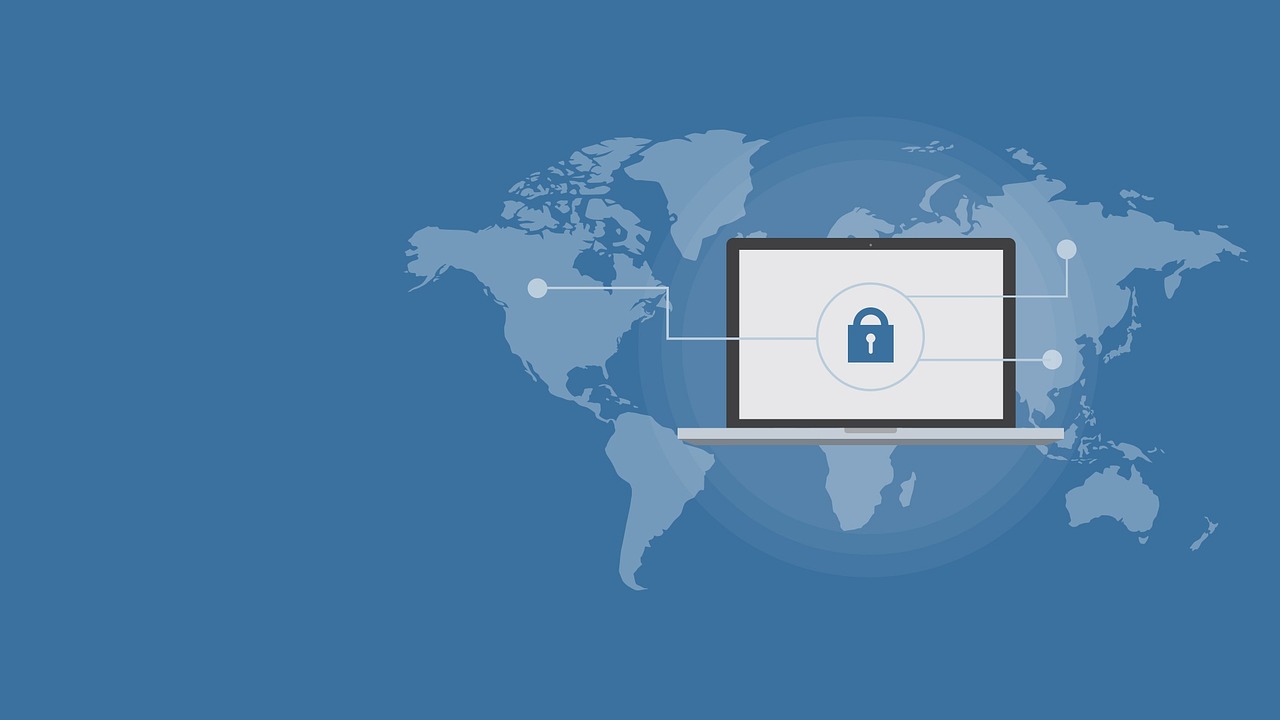
Challenges in Drone Deployment
While drone technology offers a plethora of advantages for border surveillance, the deployment of drones is not without its challenges. One of the most significant hurdles is navigating the complex web of regulatory restrictions that govern airspace. Different countries have varied laws regarding drone usage, and these regulations can often be a patchwork of rules that make it difficult for border enforcement agencies to operate effectively. For instance, in some regions, drones may be prohibited from flying over populated areas, which limits their operational scope.
Additionally, privacy concerns loom large when it comes to using drones for surveillance. The prospect of being monitored by unmanned aerial vehicles raises questions about individual rights and consent. People may feel uneasy knowing that their movements could be tracked without their knowledge, leading to a potential backlash against such technologies. This highlights the need for transparent policies that protect citizens' privacy while allowing for effective border security measures.
Technical limitations also pose a challenge. While drone technology has advanced significantly, issues such as battery life and data transmission remain critical concerns. Drones typically have limited flight times, which can restrict their ability to cover extensive border areas. Furthermore, ensuring a stable connection for real-time data transmission can be problematic, especially in remote regions with poor network infrastructure. These technical hurdles necessitate ongoing research and development to enhance drone capabilities.
Moreover, the integration of drones into existing border security frameworks requires substantial training and resources. Personnel must be adequately trained to operate drones and interpret the data they collect. This involves not just technical training but also a comprehensive understanding of how to integrate drone surveillance with traditional border patrol methods. The cost of such training and the need for ongoing maintenance can strain budgets, particularly for smaller agencies.
In summary, while the potential of drones in border security is immense, addressing these challenges is crucial for their successful deployment. Stakeholders must work together to create a balanced approach that maximizes the benefits of drone technology while mitigating its risks. By focusing on regulatory compliance, privacy protection, technical improvements, and adequate training, we can pave the way for a more effective and ethical use of drones in border defense.
- What are the main advantages of using drones for border surveillance?
Drones offer the ability to cover large areas quickly, provide high-resolution imagery, and operate in various weather conditions, making them a cost-effective solution for border patrol.
- How do regulatory restrictions affect drone deployment?
Different countries have varying laws regarding drone usage, which can limit operational capabilities and create challenges for border enforcement agencies.
- What privacy concerns are associated with drone surveillance?
Individuals may be monitored without their consent, raising significant privacy issues that necessitate transparent policies and safeguards.
- What technical limitations do drones face?
Drones often struggle with limited battery life and data transmission issues, particularly in remote areas, which can hinder their effectiveness in border surveillance.

AI-Powered Data Analysis
In today's fast-paced world, the sheer volume of data generated is staggering. For border security agencies, this data can be both a blessing and a challenge. Enter , a game-changing technology that can sift through mountains of information to provide actionable insights. Imagine trying to find a needle in a haystack, but with AI, that needle becomes much easier to spot. By leveraging advanced algorithms, AI can analyze vast amounts of data from various sources, including surveillance cameras, social media, and historical records, to identify patterns and predict potential threats.
One of the most exciting aspects of AI in data analysis is its ability to learn and adapt over time. As it processes more data, it becomes better at recognizing anomalies and understanding what constitutes a threat. For instance, if a specific area along the border sees an uptick in unusual activity, AI can flag this for further investigation, allowing border patrol agents to focus their efforts where they are most needed. This not only enhances efficiency but also maximizes the use of limited resources.
Moreover, AI can help in making informed decisions faster. Traditional methods of data analysis can be time-consuming, often leading to delays in response times. With AI, real-time data processing allows border security teams to react swiftly to emerging situations. This is particularly important in scenarios where every second counts, such as intercepting illegal crossings or responding to potential threats.
To illustrate the impact of AI in data analysis, consider the following table that outlines the key benefits:
| Benefit | Description |
|---|---|
| Speed | AI processes data in real-time, allowing for quicker decision-making. |
| Accuracy | Advanced algorithms reduce the risk of human error in threat detection. |
| Resource Optimization | AI enables agencies to allocate resources more effectively based on data-driven insights. |
| Predictive Analytics | AI can identify trends and predict potential threats before they occur. |
While the advantages of AI-powered data analysis are clear, it’s important to recognize the challenges that come with it. Data privacy is a significant concern, as the collection and analysis of personal information can lead to ethical dilemmas. Border security agencies must ensure that they are not infringing on individuals' rights while utilizing these advanced technologies. Transparent policies and robust safeguards are essential to maintain public trust.
In conclusion, AI-powered data analysis is revolutionizing border security by transforming how data is processed and interpreted. As these technologies continue to evolve, they promise to enhance safety and efficiency in managing national borders. However, it remains crucial for agencies to balance innovation with ethical considerations, ensuring that the deployment of AI serves the public interest while safeguarding individual rights.
- What is AI-powered data analysis?
AI-powered data analysis involves using artificial intelligence algorithms to process and analyze large volumes of data to identify patterns and predict potential threats. - How does AI improve border security?
AI enhances border security by enabling faster decision-making, improving accuracy in threat detection, and optimizing resource allocation based on data insights. - What are the ethical concerns associated with AI in border security?
Key concerns include data privacy, potential bias in AI algorithms, and the need for transparent policies to protect individual rights. - Can AI predict security threats?
Yes, AI can analyze historical data and current trends to identify potential threats before they materialize, allowing for proactive measures.

Ethical Considerations in AI Deployment
The integration of artificial intelligence into border defense systems is not just a technological leap; it also brings forth a myriad of ethical considerations that society must grapple with. As we deploy these advanced systems, we must ask ourselves: what are the implications for privacy, accountability, and potential biases that may arise? These questions are vital, as they shape the public's trust and acceptance of AI in this sensitive area.
One of the most pressing issues is privacy concerns. With AI surveillance technologies, there’s a real possibility that individuals could be monitored without their consent. Imagine a world where your movements are tracked by drones and cameras, all in the name of security. This reality can feel invasive, and it raises the need for transparent policies and safeguards to protect individual rights. The balance between national security and personal privacy is a tightrope walk that requires careful consideration.
Moreover, the potential for bias in AI systems is another critical concern. AI algorithms learn from data, and if that data contains biases, the AI can perpetuate and even amplify these biases in its decision-making processes. For instance, if a surveillance system is trained on data that disproportionately highlights certain demographics, it may unfairly target those groups in real scenarios. This not only leads to inequitable treatment but also undermines the very principles of justice and fairness that societies strive to uphold. Continuous evaluation and adjustment of these systems are essential to mitigate such risks.
To further illustrate these ethical dilemmas, consider the following table that highlights key ethical concerns associated with AI deployment in border defense:
| Ethical Concern | Description |
|---|---|
| Privacy Invasion | The risk of monitoring individuals without their consent, leading to a loss of personal freedoms. |
| Accountability Issues | Determining who is responsible when AI systems make erroneous decisions or cause harm. |
| Bias and Fairness | The potential for AI systems to reflect and amplify societal biases, leading to discrimination. |
| Transparency | The need for clear guidelines on how AI systems operate and make decisions. |
As we navigate these ethical waters, it's crucial for stakeholders—including governments, tech companies, and civil society—to engage in open dialogues about the implications of AI in border security. This collaboration can foster an environment where innovation does not come at the cost of fundamental human rights.
- What are the main ethical concerns surrounding AI in border security?
The primary concerns include privacy invasion, accountability issues, potential biases in AI systems, and the need for transparency in how these systems operate. - How can we ensure that AI systems are fair and unbiased?
Continuous evaluation and adjustment of AI algorithms are necessary, along with diverse training data and regular audits to identify and mitigate biases. - What role do policies play in AI deployment?
Transparent policies are essential to protect individual rights and ensure that AI technologies are used responsibly and ethically. - Can AI improve border security without compromising privacy?
Yes, with the right safeguards and transparent practices, AI can enhance security while respecting individual privacy rights.

Privacy Concerns
The integration of AI surveillance technologies in border defense systems raises significant privacy concerns that cannot be overlooked. As these technologies become more prevalent, the potential for monitoring individuals without their consent increases dramatically. Imagine walking down the street, unaware that a sophisticated AI system is analyzing your every move. This scenario is not just a dystopian vision; it's a reality that many people face today. The question arises: how do we balance national security with individual privacy rights?
One of the main issues is the extent to which data is collected and analyzed. AI systems can process vast amounts of information from various sources, including social media, public records, and real-time surveillance footage. While this capability can enhance security measures, it also means that personal data may be collected without explicit consent. This raises ethical questions about the transparency of these operations. Are individuals aware that they are being monitored? Are there clear policies in place to protect their rights?
Furthermore, the potential for misuse of data is a pressing concern. For instance, if sensitive information falls into the wrong hands, it could lead to identity theft or other malicious activities. It's crucial for border security agencies to implement stringent data protection measures. This includes ensuring that data is stored securely and only accessed by authorized personnel. The establishment of clear guidelines on how long data can be retained is also vital to prevent unnecessary invasions of privacy.
To address these concerns, stakeholders must engage in open dialogues about privacy rights and the implications of AI technology. This could involve:
- Creating transparent policies that outline how surveillance technologies are used.
- Implementing regular audits to ensure compliance with privacy standards.
- Establishing an independent oversight body to monitor AI deployment in border security.
Ultimately, the challenge lies in finding a balance between leveraging advanced technology for security and respecting the privacy of individuals. As we move forward, it’s essential to foster a culture of accountability and transparency in AI deployment. Only then can we build a border defense system that is both effective and respectful of personal freedoms.
- What are the main privacy concerns associated with AI in border security?
The primary concerns include unauthorized surveillance, data collection without consent, and the potential misuse of personal information. - How can privacy be protected while using AI technologies?
Implementing transparent policies, regular audits, and establishing independent oversight can help protect privacy. - Is there a risk of bias in AI systems used for border security?
Yes, AI systems can perpetuate biases present in their training data, which necessitates ongoing evaluation and adjustments to ensure fairness.

Addressing Bias in AI Systems
When we talk about artificial intelligence in the context of border security, one of the most pressing issues is the potential for bias in AI systems. Just like a double-edged sword, AI can either enhance our capabilities or lead us down a path of unfairness and discrimination. Bias can creep into AI algorithms through various channels, primarily through the data they are trained on. If the training data reflects societal biases, the AI systems will likely replicate those biases in their operations. This is particularly concerning in border security, where decisions can have significant implications for individuals and communities.
To tackle this challenge, it’s essential to implement a robust framework that emphasizes fairness and transparency. One of the first steps is to conduct regular audits of the AI systems being used. These audits can help identify any biases that may have developed over time. For instance, if an AI system is disproportionately flagging individuals from certain backgrounds as threats, it’s crucial to recognize and rectify this issue before it escalates.
Moreover, incorporating diverse datasets during the training phase can significantly reduce bias. This means not only collecting data from various demographics but also ensuring that the data reflects a wide range of scenarios and contexts. By doing so, we can create AI systems that are more representative of the diverse populations they are meant to serve. Collaboration with experts in ethics, sociology, and data science can also provide invaluable insights into how to construct fair AI systems.
Another effective strategy is to include a feedback loop in the AI decision-making process. This allows border security agencies to learn from past decisions and continuously improve the algorithms. For example, if an AI system incorrectly identifies a non-threatening individual as a risk, having a mechanism in place to review and learn from this mistake can help refine the system's accuracy over time. This iterative approach not only enhances the reliability of the AI systems but also builds trust among the communities they serve.
In summary, addressing bias in AI systems is not just a technical challenge; it’s a moral imperative. As we venture further into the realm of autonomous border defense, it’s crucial to ensure that our AI systems operate fairly and justly. By prioritizing transparency, conducting regular audits, utilizing diverse datasets, and implementing feedback mechanisms, we can work towards a future where technology serves as a tool for equality rather than division.
- What is bias in AI systems? Bias in AI systems refers to the tendency of algorithms to produce unfair outcomes based on the data they were trained on, which may reflect societal inequalities.
- How can bias in AI be addressed? Bias can be addressed through regular audits, diverse training datasets, expert collaboration, and implementing feedback mechanisms for continuous improvement.
- Why is it important to address bias in border security AI systems? Addressing bias is crucial to ensure fair treatment of individuals and to prevent discrimination, which can undermine public trust in security measures.

The Future of Autonomous Border Defense
The landscape of border defense is rapidly evolving, and the future promises to be even more transformative. As technology advances at an unprecedented pace, we can expect autonomous systems to play a pivotal role in how nations secure their borders. Imagine a world where artificial intelligence seamlessly integrates with advanced surveillance technologies, creating a robust defense mechanism that not only enhances security but also ensures efficiency. This future is not just a distant dream; it is already on the horizon, and the implications are profound.
One of the most exciting aspects of this future is the potential for collaboration between AI and human operatives. While autonomous systems can handle routine surveillance and data analysis, humans will still play a critical role in decision-making processes. This partnership can lead to a more effective border defense strategy, where AI handles the heavy lifting, allowing human agents to focus on complex situations that require critical thinking and empathy. Picture a scenario where drones equipped with AI monitor vast stretches of borderland, detecting anomalies and alerting human agents to potential threats. This synergy could drastically reduce response times and improve overall safety.
Moreover, the future of autonomous border defense will likely involve an increased emphasis on data sharing and collaboration between nations. In an era where threats are often transnational, sharing intelligence and resources can create a united front against potential dangers. Countries could develop standardized protocols for data exchange, allowing for a more coordinated response to emerging threats. This level of collaboration could also foster trust among nations, as countries work together to enhance their security measures while respecting each other's sovereignty.
However, as we embrace these advancements, we must also consider the implications of ethical compliance in deploying AI technologies. The integration of autonomous systems into border defense raises critical questions about privacy, accountability, and bias. It is essential for policymakers to establish clear guidelines that govern the use of AI in surveillance, ensuring that the rights of individuals are protected. For instance, transparent policies should be developed to outline how data is collected, stored, and utilized, thereby mitigating concerns about unwarranted surveillance and potential abuses of power.
In addition, as AI systems become more sophisticated, continuous monitoring and evaluation will be necessary to address any biases that may arise from training data. It is crucial for developers and border security agencies to work together in creating algorithms that are fair and equitable, ensuring that all individuals are treated justly. This ongoing commitment to ethical practices will be vital in maintaining public trust and support for autonomous border defense initiatives.
As we look to the future, the potential for innovation in autonomous border defense is limitless. From advancements in drone technology to the application of machine learning in threat detection, the next generation of border security will be more agile and responsive than ever before. The incorporation of cutting-edge technologies will not only enhance surveillance capabilities but also provide valuable insights into patterns and trends that can inform policy decisions. Just as the internet revolutionized communication, AI has the potential to redefine how nations approach border security, making it more proactive rather than reactive.
In conclusion, the future of autonomous border defense is not merely about deploying advanced technologies; it is about creating a comprehensive strategy that balances security needs with ethical considerations. By fostering collaboration, embracing innovation, and prioritizing ethical practices, we can pave the way for a safer and more secure world. The journey ahead may be complex, but with the right approach, the future of border defense can be both effective and just.
- What role will AI play in border security?
AI will enhance surveillance, automate processes, and analyze data to detect threats more effectively. - How will autonomous systems improve border defense?
These systems will provide real-time monitoring, reduce human workload, and enable quicker response times. - What are the ethical concerns surrounding AI in border defense?
Concerns include privacy issues, potential bias in AI algorithms, and the need for accountability in surveillance practices. - How can nations collaborate on border security?
By sharing intelligence and resources, countries can create a united front against transnational threats. - What is the future outlook for autonomous border defense?
The future will likely see more sophisticated technologies, increased collaboration, and a focus on ethical compliance.
Frequently Asked Questions
- What role does AI play in border security?
AI is revolutionizing border security by automating various processes, analyzing large datasets, and enhancing surveillance capabilities. This allows border agencies to detect threats more effectively and respond to incidents in real-time.
- How do autonomous surveillance systems work?
Autonomous surveillance systems utilize AI technologies, such as drones and advanced cameras, to monitor borders continuously. These systems provide real-time situational awareness, reducing the need for constant human oversight and allowing for quicker responses to potential threats.
- What are the advantages of using drones for border patrol?
Drones offer several benefits, including their ability to cover large areas swiftly, access remote locations, operate under various weather conditions, and deliver high-resolution imagery. This makes them a cost-effective solution for enhancing border security.
- What challenges do drones face in border security operations?
Despite their advantages, drones encounter challenges such as regulatory restrictions, privacy issues, and technical limitations. Addressing these challenges is crucial for the successful integration of drones into border security frameworks.
- How does AI enhance data analysis in border security?
AI algorithms can process and analyze vast amounts of data from multiple sources, helping border security agencies identify patterns and predict potential threats. This capability allows for more informed decision-making and improved efficiency in operations.
- What ethical concerns arise from the use of AI in border defense?
The deployment of AI in border security raises ethical questions about privacy, accountability, and potential biases in decision-making. It's essential for agencies to examine their policies and practices to ensure responsible and fair use of AI technologies.
- How can privacy concerns be addressed in AI surveillance?
To mitigate privacy concerns, it is vital to establish transparent policies and safeguards that govern AI surveillance technologies. Individuals should be informed about when and how they are monitored, ensuring that their rights are respected.
- What steps are being taken to address bias in AI systems?
Ongoing evaluation and adjustment of AI systems are necessary to minimize biases that may arise from training data. This includes implementing diverse datasets and regularly reviewing algorithms to ensure fairness and accuracy in border security applications.
- What does the future hold for autonomous border defense?
The future of autonomous border defense is likely to feature increasingly sophisticated AI systems. This evolution will require continuous adaptation and collaboration among stakeholders to ensure that these technologies are effective and ethically compliant.


